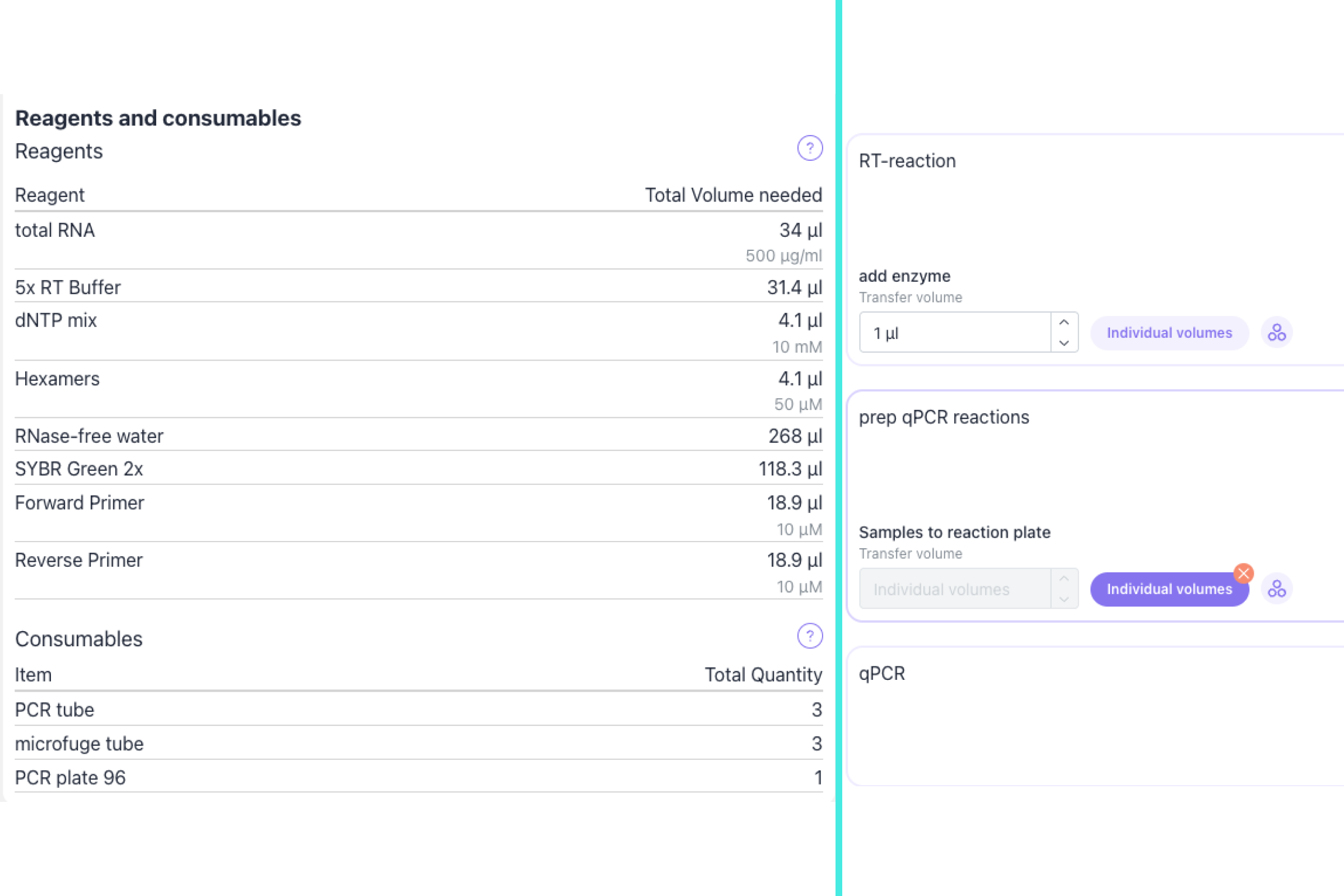Features
-

Familiar Elements
Every part of Qvios is built specifically for a laboratory environment. Tools, units of measurement, and visuals are all familiar to lab professionals.
-

Reusable Components
Protocols, procedures, and labware can be saved as separate components that are easy to reuse elsewhere. If you need to run several clean-up routines in one protocol, there's no need to rewrite it each time—just save it once and reuse it forever.
-

Collaboration Made Easy
With the Team Plan, you can share protocols with your labmates, and managers can get a broad overview of experiments happening in the lab. You can also share protocols outside the team by simply sending a link.
-

Streamlined Experiment Management
Run your experiments smoothly using integrated tools like pipetting maps and timers. Organize your results by uploading data directly to Qvios.
-

Scalable Experiments
You can set the number of samples and other variables for each experiment, and the steps will automatically adjust for each run. No need to calculate reagents or prepare excess. Saving reagents saves money and benefits the environment.
-

Side Note
Skip the separate notebook and add notes, protocol deviations, and sample flags next to the step-by-step instructions. These are directly connected to the experimental steps and are saved for future reference.
-

Standardized Data
All design and execution parameters are stored in a standard format, making it simple to trace them back to the samples and measurement results without extra effort. Powerful visualization tools help you understand how each change impacts the outcome and uncover insights that might otherwise be overlooked.
-

Publication-Ready Charts
Build your custom interactive chart panel by simply dragging and dropping to add the most important values. Then modify the details to suit your needs.
